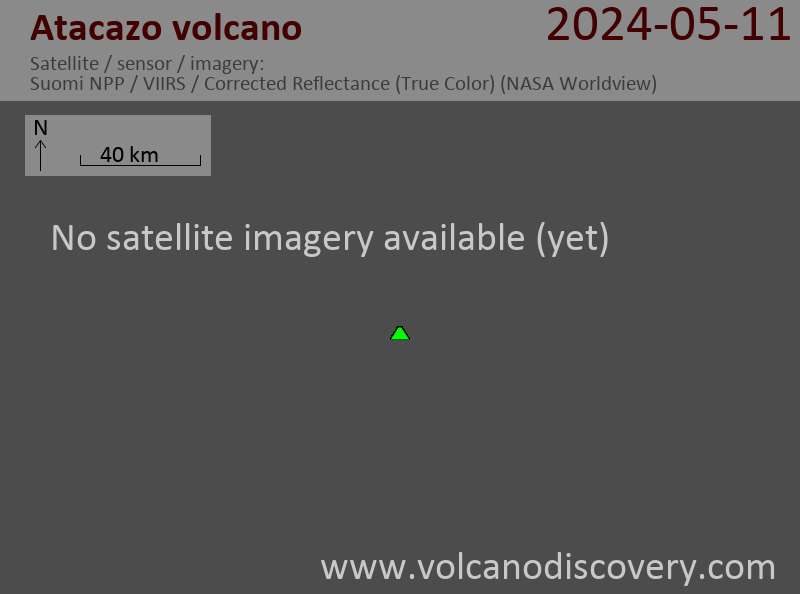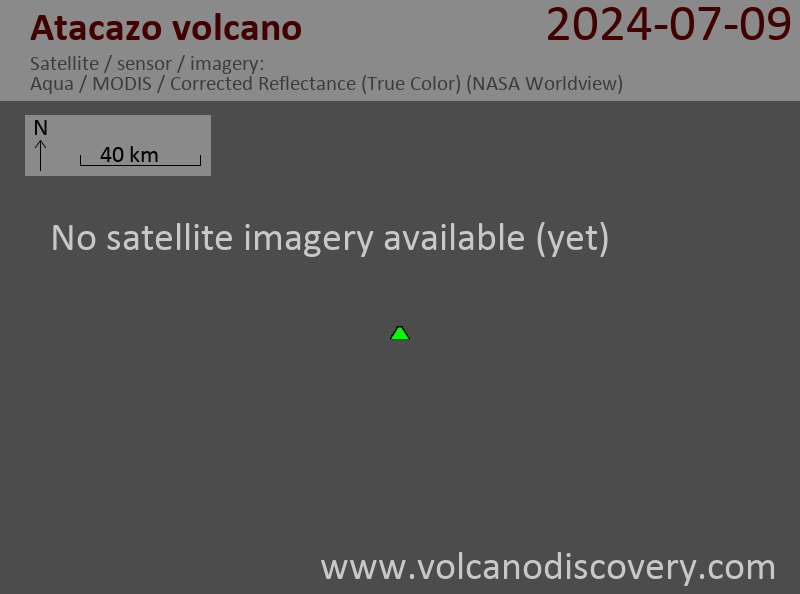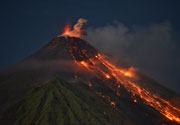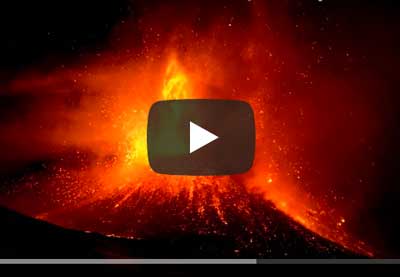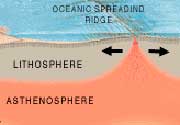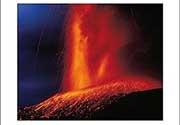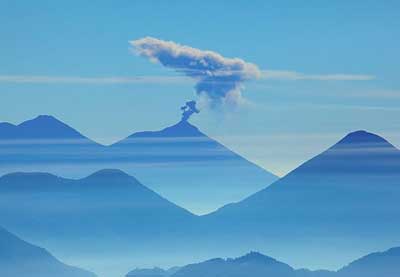Ata caldera Volcano
Updated: Apr 25, 2024 14:04 GMT -
caldera 924 m / 3031 ft
Kyushu Island, Japan, 31.22°N / 130.57°E
Current status: normal or dormant (1 out of 5)
Kyushu Island, Japan, 31.22°N / 130.57°E
Current status: normal or dormant (1 out of 5)
Ata is one of the major active caldera systems of Kyushu, located south of the Kagoshima Bay. It had a massive "super-volcano"-style eruption 40,000 years ago, and contains the active Ibusuki volcanic field as well as famous Kaimondake stratovolcano towering above the southern tip of the island.
[smaller] [larger]
Ata caldera volcano eruptions: 885 AD
Latest nearby earthquakes
| Time | Mag. / Depth | Distance / Location | |||
| Apr 22, 04:54 am (GMT +9) | 2.6 184 km | 28 km (17 mi) to the W | Info | ||
| Friday, April 19, 2024 GMT (1 quake) | |||||
| Apr 19, 05:52 pm (GMT +9) | 3.0 163 km | 21 km (13 mi) to the W | Info | ||
| Saturday, April 13, 2024 GMT (1 quake) | |||||
| Apr 13, 07:57 pm (GMT +9) | 2.5 136 km | 23 km (15 mi) to the SW | Info | ||
| Friday, April 12, 2024 GMT (1 quake) | |||||
| Apr 13, 01:00 am (GMT +9) | 4.0 147 km | 13 km (7.9 mi) to the W | Info | ||
Background
The submerged 15 x 25 km Ata caldera under Kagoshima Bay is one of several large calderas in southern Kyushu and the source of major pyroclastic flows associated with its formation more than 40,000 years ago.The National Catalogue of the Active Volcanoes of Japan (JMA, 2013) included features of the Ibusuki volcanic field as part of the Ata post-caldera system. That area consists of numerous central cones and maars, the 4.5-km-wide Ikeda caldera, and Kaimondake stratovolcano. The symmetrical andesitic Kaimondake is the most prominent feature, and is capped by a lava dome. Ibusuki has been very active during the Holocene, forming the Ikeda caldera about 4,600 years ago, numerous maars and lava domes. Kaimondake formed during the last 4,000 years, from which all eruptive activity has occurred after about 2,650 years ago. Its last eruption took place in the 9th century. While listed as features of the Ata caldera, JMA (2013) simultaneously listed Kaimondake and the combination of Ikeda and Yamagawa as distinct volcanoes.
Ata caldera Volcano Photos
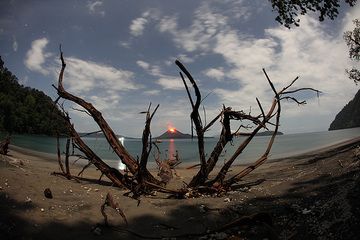
A large tree has recently fallen onto the beach of Rakata, exposing its strong radial roots, because the beach is constantly eroding.
The scene of the caldera of Kr...
The scene of the caldera of Kr...
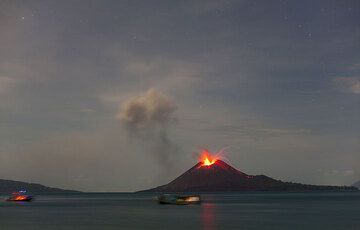
Fishing boats in the caldera in front of erupting Anak Krakatau. 4 June 09 (Photo: Tom Pfeiffer)
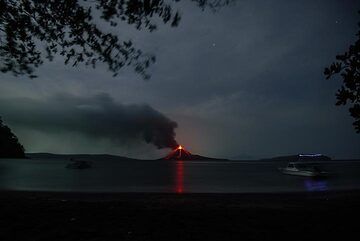
Wide-angle view of the caldera of Krakatau; our boat drifts into the picture (r). (Photo: Tom Pfeiffer)

Full moon sky, the caldera and a birght eruption of Anak Krakatau. (25 Nov 2007) (Photo: Tom Pfeiffer)





